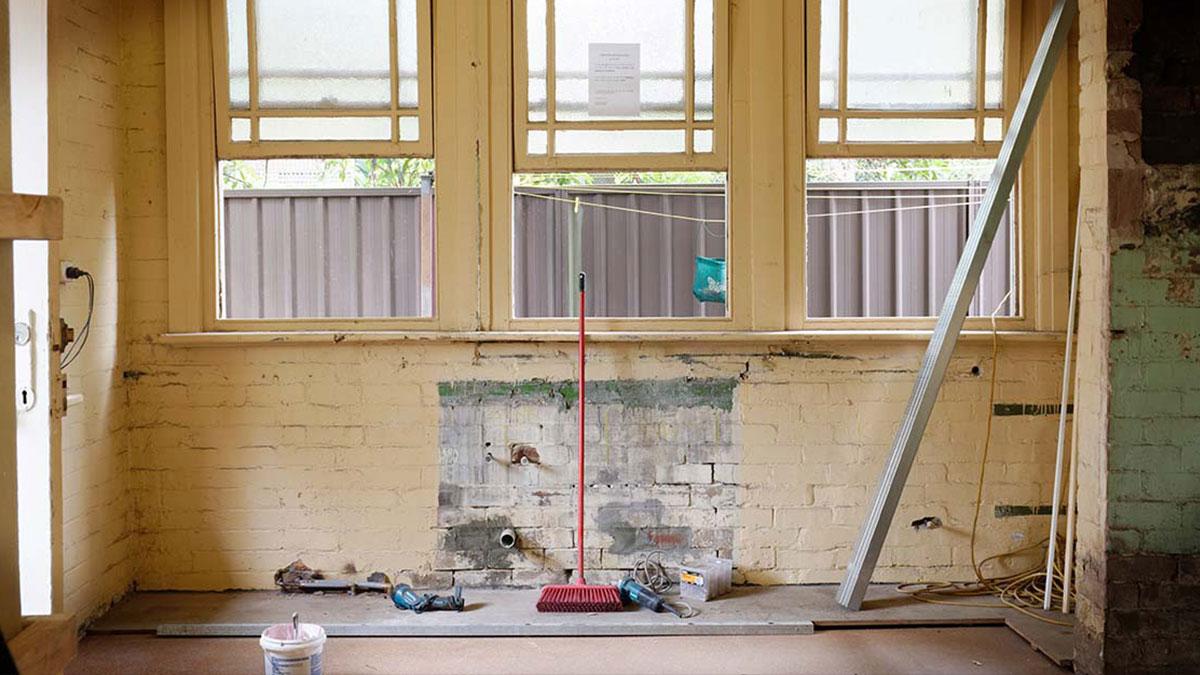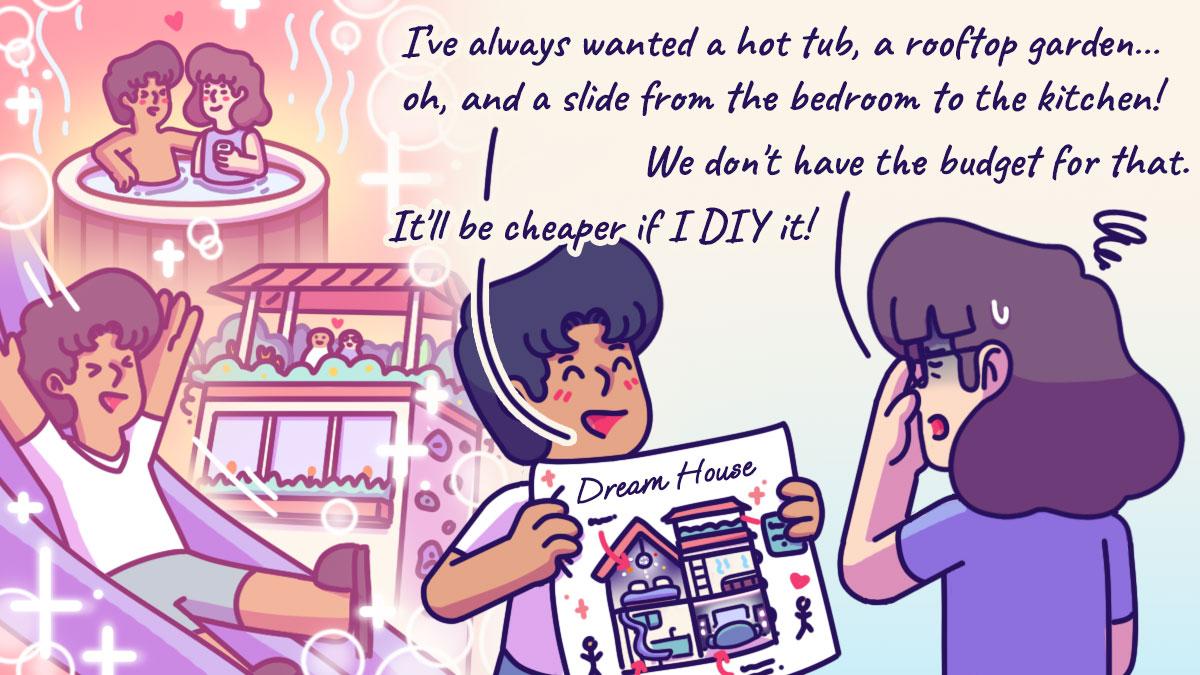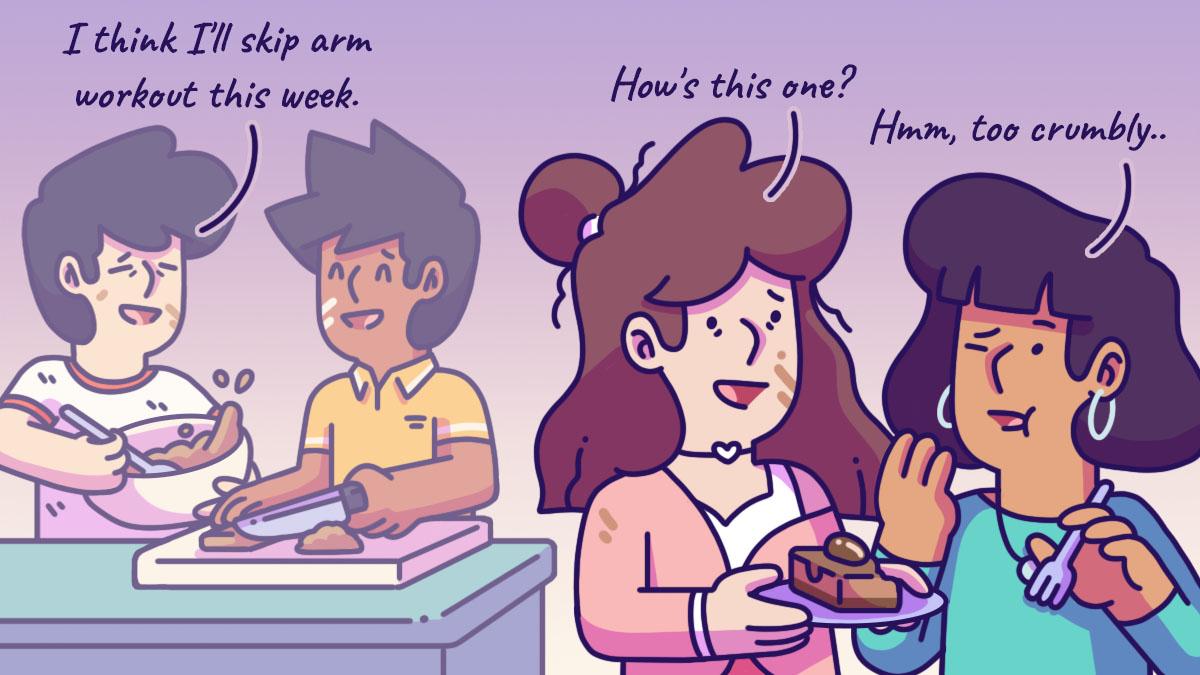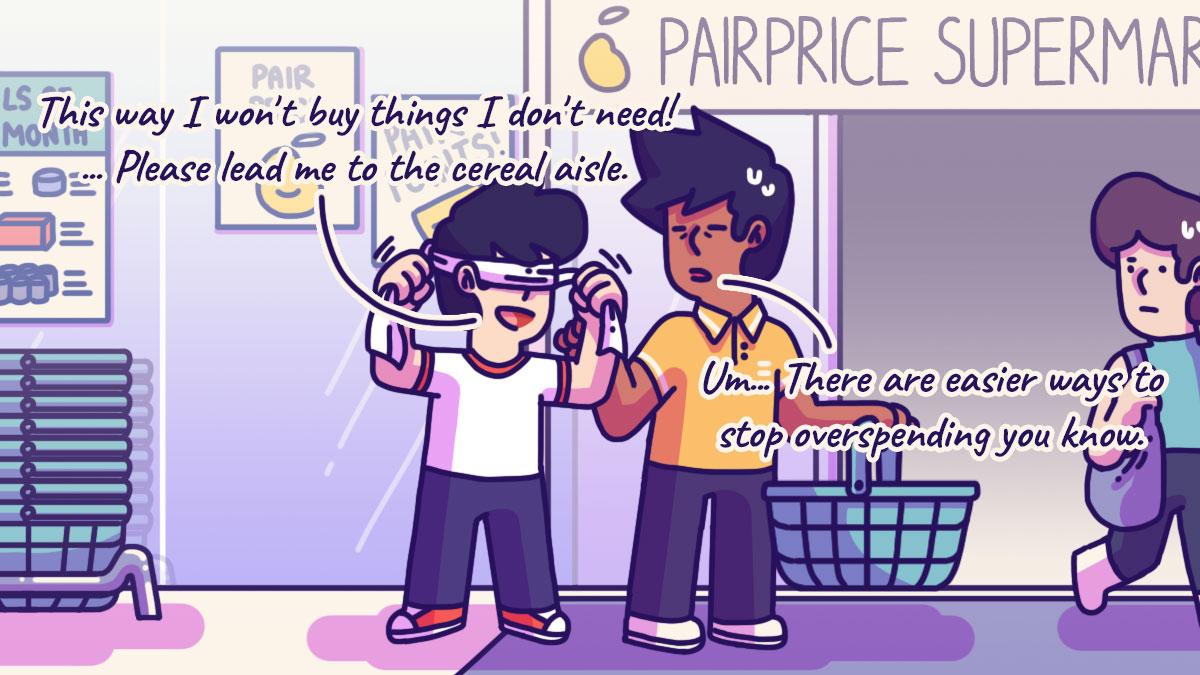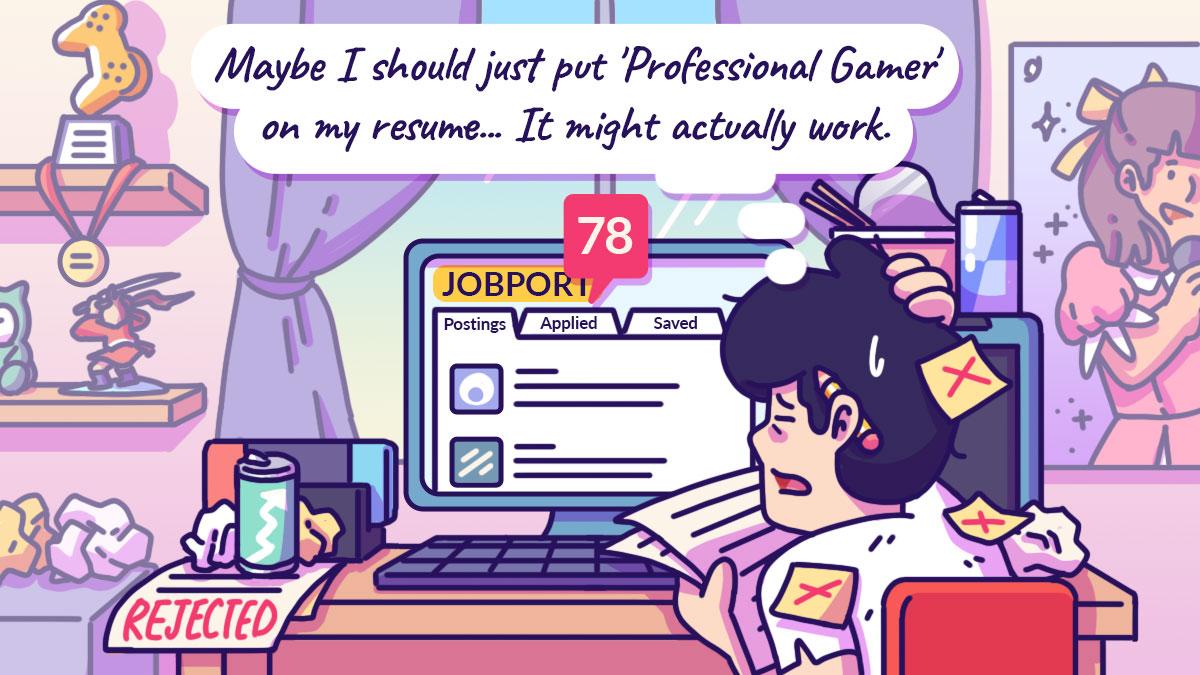Buying a house is a huge life milestone, especially for first-timers.
Because of that, you’d want your first-ever home to be perfect, and rightfully so.But after watching numerous Youtube videos and thumbing through countless catalogues, a realization hits you like a stack of bricks (mind the pun): designing and decorating just ain’t that easy.And with a budget tighter than your skinny jeans, chances are you’re going to need some serious help to turn your house into a home.
Building on that (mind the pun x2), I sat down with an interior designer, Eddie from
Two Dots Interior, and asked about money-saving reno hacks and the ins and outs of his job.[caption id="attachment_4892" align="aligncenter" width="381"]
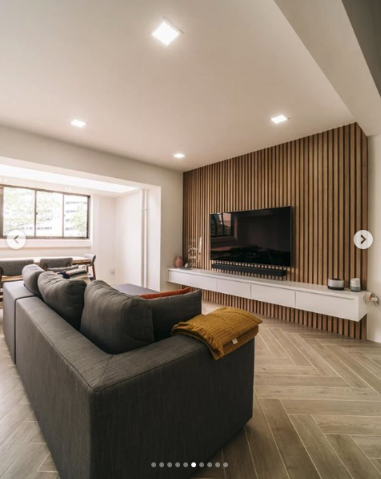
@twodotsinterior[/caption]
En: Let’s start with an introduction. What’s your job, and how long have you been doing it for?
Eddie: I’m an interior designer, and I have been doing this for approximately four years.
En: And what does a day in your life look like?
Eddie: Usually, the first thing I do is a spot check of my job sites to make sure everything is running smoothly. By noon, I would be in the office doing some paperwork and quotations. In the evening, I would meet clients for a chat because that’s when most homeowners are free.
En: So when discussing designs with your clients, what themes do most of them gravitate toward?
Eddie: Generally, Scandinavian/minimalist concepts are widely appreciated. But younger couples tend to be bolder and would go for the “industrial” look.
En: Conversely, what are some trends that many thought were cool before but are out-of-style now?
Eddie: Terrazzo marble tiles, arched entrances, and rockstone walls were widely popular in the past. But it feels dated and not many people appreciate them anymore.
En: Suppose your client is on a tight budget. How would you help them save on the reno?
Eddie: First off, I have to understand their standard needs. Then, I’ll advise them to prioritize. For example, what is the most important place to renovate first? And which spaces are easier to renovate later when they have a bigger budget to work with.
[caption id="attachment_4891" align="aligncenter" width="604"]
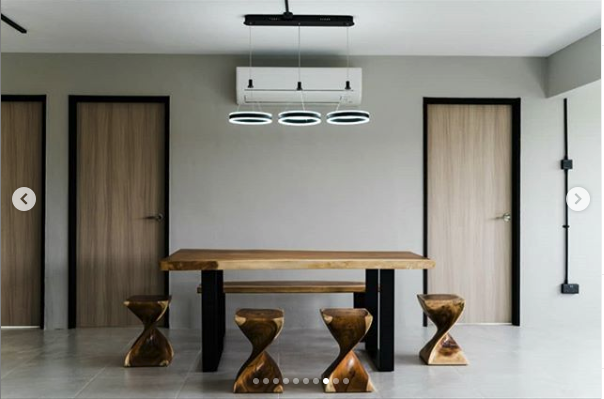
@twodotsinterior[/caption]
En: So what kind of reno cost should a client be expecting for, let’s say, a 4-room BTO?
Eddie: With floor tiles given by HDB, the cost is $15,000 to $30,000. Without floor tiles, $20,000 onwards.
En: What about discounts? In the Singaporean context, some clients are superstitious and think they can haggle more during 7th month (ghost festival). Is this true?
Eddie: Actually, the 7th month is when most IDs have some spare time, as some clients choose to pause the renovations then. Of course, we will respect their wishes. As for discounts, I do have clients who ask for them. But, in my experience, that can happen at any month and not particularly during the ghost festival itself.
En: While we’re on the topic of saving money, can you divulge some things in the renovation world that are overpriced?
Eddie: High-quality marble. I won’t say those are really overpriced, but they are rare and hard to get, hence that price. It’s the same story with expensive Italian tiles. It’s not necessary to use them, as the same “look” can be achieved with China tiles as well.
En: Yup, and alternatively, what are some things that cannot be saved on?
Eddie: Definitely quality of materials. Some examples are soft-closing hinges or quartz worktops. Also, materials that concern safety like tempered glass, etc.
En: You mentioned the quality of materials. Where can clients research on that?
Eddie: There are multiple websites that you can find, namely Qanvast, Renopedia, Home Reno Guru, and some home forums where many people will share their experiences on.
En: Let’s flip the tables for a bit. Say you’re a first-time client looking for an interior designer. How would you know which designer is ideal for you?
[caption id="attachment_4890" align="aligncenter" width="385"]
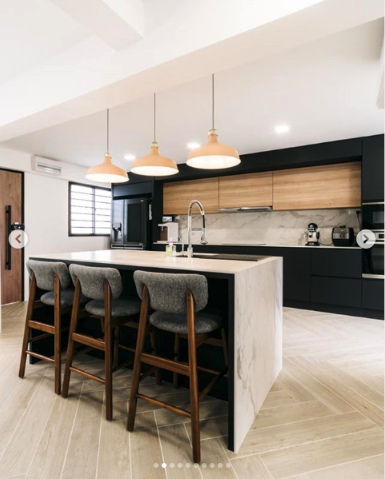
@twodotsinterior[/caption]
Eddie: I strongly believe that chemistry is very important between the interior designer and the homeowner. Comfortability too. The right designer has to make the effort to find out what style and budget the client is working with and then build that dream home for them.
En: True. And conversely, what would be some signs that a designer is bad?
Eddie: Communication and accountability are very important. The ID must be contactable to the sub-contractors or the homeowner. As most of our job is liaising the renovation works, we have to be on the ball in case anything happens. If an ID is unresponsive, that is a big red flag.
En: Sure. What about from the viewpoint of the designer? Are there any horror stories about clients/suppliers you can share?
Eddie: Some clients are anal about every little detail and every little speck of dust and paint. I had a client who delayed my final payment just because he found dust trapped between the grouting of his living room after he stayed in his home for about 2 months. I also had suppliers who failed to deliver on time. But such things are common. As IDs, part of our job is to handle expectations from both the homeowners and suppliers.
En: So what kind of client would be your dream customer?
Eddie: Actually, most of my clients are my friends now. And my main business model is via referral. I feel good when they are happy with the end result too. But, of course, my dream customer would be someone who trusts me and allows my creativity to soar. I’m happy to say that a lot of them did.
En: One last question. When it comes to interior designing, what’s your ultimate philosophy?
Eddie: I strongly believe in effort and having a passion for the job. I put my heart into my work and let the design do the talking. And be very honest when it comes to business. Do good and good will come to you.
 @twodotsinterior[/caption]
En: Let’s start with an introduction. What’s your job, and how long have you been doing it for?
Eddie: I’m an interior designer, and I have been doing this for approximately four years.
En: And what does a day in your life look like?
Eddie: Usually, the first thing I do is a spot check of my job sites to make sure everything is running smoothly. By noon, I would be in the office doing some paperwork and quotations. In the evening, I would meet clients for a chat because that’s when most homeowners are free.
En: So when discussing designs with your clients, what themes do most of them gravitate toward?
Eddie: Generally, Scandinavian/minimalist concepts are widely appreciated. But younger couples tend to be bolder and would go for the “industrial” look.
En: Conversely, what are some trends that many thought were cool before but are out-of-style now?
Eddie: Terrazzo marble tiles, arched entrances, and rockstone walls were widely popular in the past. But it feels dated and not many people appreciate them anymore.
En: Suppose your client is on a tight budget. How would you help them save on the reno?
Eddie: First off, I have to understand their standard needs. Then, I’ll advise them to prioritize. For example, what is the most important place to renovate first? And which spaces are easier to renovate later when they have a bigger budget to work with.
[caption id="attachment_4891" align="aligncenter" width="604"]
@twodotsinterior[/caption]
En: Let’s start with an introduction. What’s your job, and how long have you been doing it for?
Eddie: I’m an interior designer, and I have been doing this for approximately four years.
En: And what does a day in your life look like?
Eddie: Usually, the first thing I do is a spot check of my job sites to make sure everything is running smoothly. By noon, I would be in the office doing some paperwork and quotations. In the evening, I would meet clients for a chat because that’s when most homeowners are free.
En: So when discussing designs with your clients, what themes do most of them gravitate toward?
Eddie: Generally, Scandinavian/minimalist concepts are widely appreciated. But younger couples tend to be bolder and would go for the “industrial” look.
En: Conversely, what are some trends that many thought were cool before but are out-of-style now?
Eddie: Terrazzo marble tiles, arched entrances, and rockstone walls were widely popular in the past. But it feels dated and not many people appreciate them anymore.
En: Suppose your client is on a tight budget. How would you help them save on the reno?
Eddie: First off, I have to understand their standard needs. Then, I’ll advise them to prioritize. For example, what is the most important place to renovate first? And which spaces are easier to renovate later when they have a bigger budget to work with.
[caption id="attachment_4891" align="aligncenter" width="604"] @twodotsinterior[/caption]
En: So what kind of reno cost should a client be expecting for, let’s say, a 4-room BTO?
Eddie: With floor tiles given by HDB, the cost is $15,000 to $30,000. Without floor tiles, $20,000 onwards.
En: What about discounts? In the Singaporean context, some clients are superstitious and think they can haggle more during 7th month (ghost festival). Is this true?
Eddie: Actually, the 7th month is when most IDs have some spare time, as some clients choose to pause the renovations then. Of course, we will respect their wishes. As for discounts, I do have clients who ask for them. But, in my experience, that can happen at any month and not particularly during the ghost festival itself.
En: While we’re on the topic of saving money, can you divulge some things in the renovation world that are overpriced?
Eddie: High-quality marble. I won’t say those are really overpriced, but they are rare and hard to get, hence that price. It’s the same story with expensive Italian tiles. It’s not necessary to use them, as the same “look” can be achieved with China tiles as well.
En: Yup, and alternatively, what are some things that cannot be saved on?
Eddie: Definitely quality of materials. Some examples are soft-closing hinges or quartz worktops. Also, materials that concern safety like tempered glass, etc.
En: You mentioned the quality of materials. Where can clients research on that?
Eddie: There are multiple websites that you can find, namely Qanvast, Renopedia, Home Reno Guru, and some home forums where many people will share their experiences on.
En: Let’s flip the tables for a bit. Say you’re a first-time client looking for an interior designer. How would you know which designer is ideal for you?
[caption id="attachment_4890" align="aligncenter" width="385"]
@twodotsinterior[/caption]
En: So what kind of reno cost should a client be expecting for, let’s say, a 4-room BTO?
Eddie: With floor tiles given by HDB, the cost is $15,000 to $30,000. Without floor tiles, $20,000 onwards.
En: What about discounts? In the Singaporean context, some clients are superstitious and think they can haggle more during 7th month (ghost festival). Is this true?
Eddie: Actually, the 7th month is when most IDs have some spare time, as some clients choose to pause the renovations then. Of course, we will respect their wishes. As for discounts, I do have clients who ask for them. But, in my experience, that can happen at any month and not particularly during the ghost festival itself.
En: While we’re on the topic of saving money, can you divulge some things in the renovation world that are overpriced?
Eddie: High-quality marble. I won’t say those are really overpriced, but they are rare and hard to get, hence that price. It’s the same story with expensive Italian tiles. It’s not necessary to use them, as the same “look” can be achieved with China tiles as well.
En: Yup, and alternatively, what are some things that cannot be saved on?
Eddie: Definitely quality of materials. Some examples are soft-closing hinges or quartz worktops. Also, materials that concern safety like tempered glass, etc.
En: You mentioned the quality of materials. Where can clients research on that?
Eddie: There are multiple websites that you can find, namely Qanvast, Renopedia, Home Reno Guru, and some home forums where many people will share their experiences on.
En: Let’s flip the tables for a bit. Say you’re a first-time client looking for an interior designer. How would you know which designer is ideal for you?
[caption id="attachment_4890" align="aligncenter" width="385"] @twodotsinterior[/caption]
Eddie: I strongly believe that chemistry is very important between the interior designer and the homeowner. Comfortability too. The right designer has to make the effort to find out what style and budget the client is working with and then build that dream home for them.
En: True. And conversely, what would be some signs that a designer is bad?
Eddie: Communication and accountability are very important. The ID must be contactable to the sub-contractors or the homeowner. As most of our job is liaising the renovation works, we have to be on the ball in case anything happens. If an ID is unresponsive, that is a big red flag.
En: Sure. What about from the viewpoint of the designer? Are there any horror stories about clients/suppliers you can share?
Eddie: Some clients are anal about every little detail and every little speck of dust and paint. I had a client who delayed my final payment just because he found dust trapped between the grouting of his living room after he stayed in his home for about 2 months. I also had suppliers who failed to deliver on time. But such things are common. As IDs, part of our job is to handle expectations from both the homeowners and suppliers.
En: So what kind of client would be your dream customer?
Eddie: Actually, most of my clients are my friends now. And my main business model is via referral. I feel good when they are happy with the end result too. But, of course, my dream customer would be someone who trusts me and allows my creativity to soar. I’m happy to say that a lot of them did.
En: One last question. When it comes to interior designing, what’s your ultimate philosophy?
Eddie: I strongly believe in effort and having a passion for the job. I put my heart into my work and let the design do the talking. And be very honest when it comes to business. Do good and good will come to you.
@twodotsinterior[/caption]
Eddie: I strongly believe that chemistry is very important between the interior designer and the homeowner. Comfortability too. The right designer has to make the effort to find out what style and budget the client is working with and then build that dream home for them.
En: True. And conversely, what would be some signs that a designer is bad?
Eddie: Communication and accountability are very important. The ID must be contactable to the sub-contractors or the homeowner. As most of our job is liaising the renovation works, we have to be on the ball in case anything happens. If an ID is unresponsive, that is a big red flag.
En: Sure. What about from the viewpoint of the designer? Are there any horror stories about clients/suppliers you can share?
Eddie: Some clients are anal about every little detail and every little speck of dust and paint. I had a client who delayed my final payment just because he found dust trapped between the grouting of his living room after he stayed in his home for about 2 months. I also had suppliers who failed to deliver on time. But such things are common. As IDs, part of our job is to handle expectations from both the homeowners and suppliers.
En: So what kind of client would be your dream customer?
Eddie: Actually, most of my clients are my friends now. And my main business model is via referral. I feel good when they are happy with the end result too. But, of course, my dream customer would be someone who trusts me and allows my creativity to soar. I’m happy to say that a lot of them did.
En: One last question. When it comes to interior designing, what’s your ultimate philosophy?
Eddie: I strongly believe in effort and having a passion for the job. I put my heart into my work and let the design do the talking. And be very honest when it comes to business. Do good and good will come to you.
